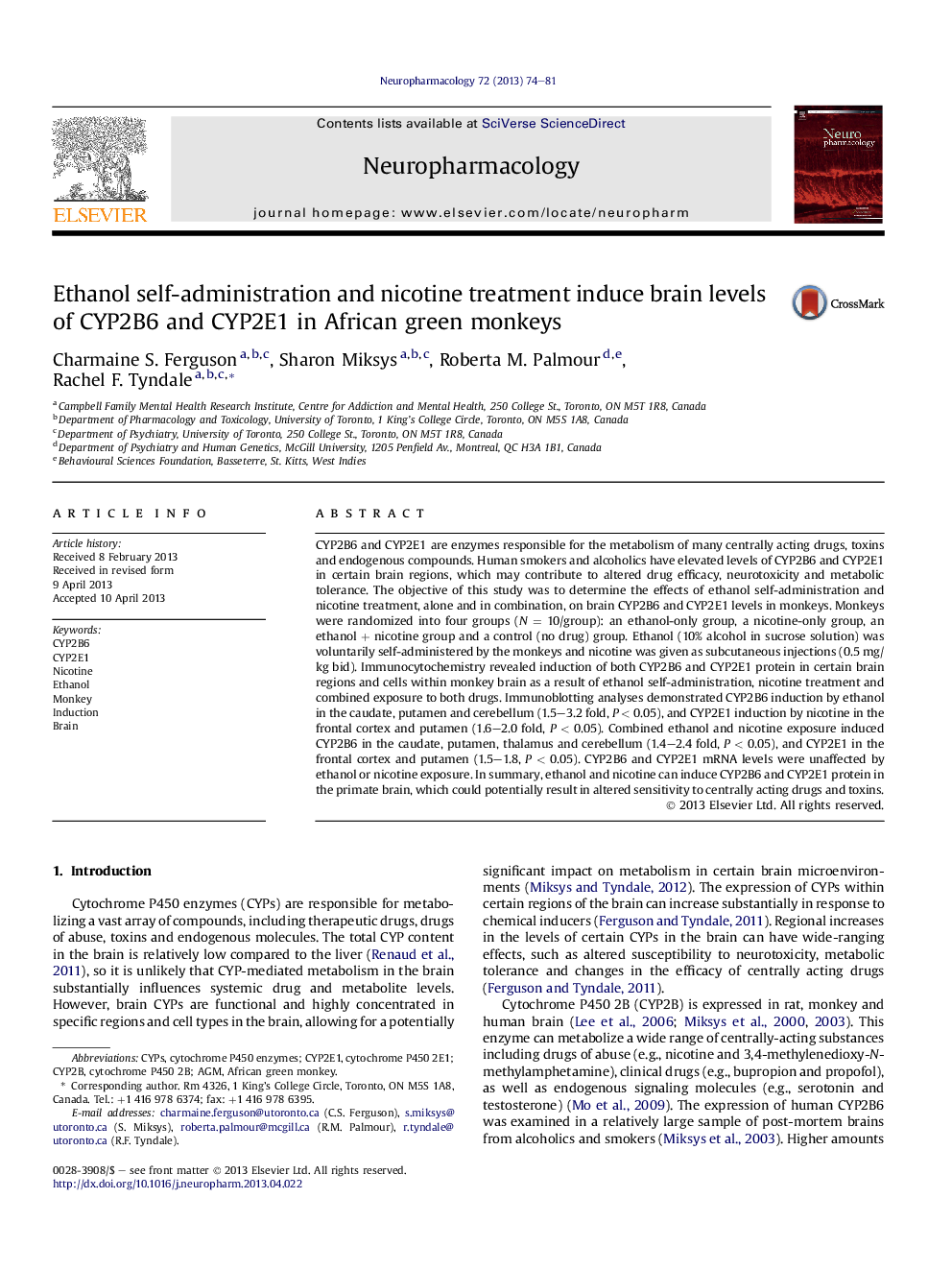| Article ID | Journal | Published Year | Pages | File Type |
|---|---|---|---|---|
| 2493453 | Neuropharmacology | 2013 | 8 Pages |
•Ethanol and nicotine increased CYP2B6 and CYP2E1 in different monkey brain regions.•Induction of brain CYP2B6 and CYP2E1 was drug-, region- and cell-specific.•Ethanol and nicotine in combination showed greater effects than either drug alone.•Human alcoholics and smokers have elevated levels of brain CYP2B6 and CYP2E1.
CYP2B6 and CYP2E1 are enzymes responsible for the metabolism of many centrally acting drugs, toxins and endogenous compounds. Human smokers and alcoholics have elevated levels of CYP2B6 and CYP2E1 in certain brain regions, which may contribute to altered drug efficacy, neurotoxicity and metabolic tolerance. The objective of this study was to determine the effects of ethanol self-administration and nicotine treatment, alone and in combination, on brain CYP2B6 and CYP2E1 levels in monkeys. Monkeys were randomized into four groups (N = 10/group): an ethanol-only group, a nicotine-only group, an ethanol + nicotine group and a control (no drug) group. Ethanol (10% alcohol in sucrose solution) was voluntarily self-administered by the monkeys and nicotine was given as subcutaneous injections (0.5 mg/kg bid). Immunocytochemistry revealed induction of both CYP2B6 and CYP2E1 protein in certain brain regions and cells within monkey brain as a result of ethanol self-administration, nicotine treatment and combined exposure to both drugs. Immunoblotting analyses demonstrated CYP2B6 induction by ethanol in the caudate, putamen and cerebellum (1.5–3.2 fold, P < 0.05), and CYP2E1 induction by nicotine in the frontal cortex and putamen (1.6–2.0 fold, P < 0.05). Combined ethanol and nicotine exposure induced CYP2B6 in the caudate, putamen, thalamus and cerebellum (1.4–2.4 fold, P < 0.05), and CYP2E1 in the frontal cortex and putamen (1.5–1.8, P < 0.05). CYP2B6 and CYP2E1 mRNA levels were unaffected by ethanol or nicotine exposure. In summary, ethanol and nicotine can induce CYP2B6 and CYP2E1 protein in the primate brain, which could potentially result in altered sensitivity to centrally acting drugs and toxins.
